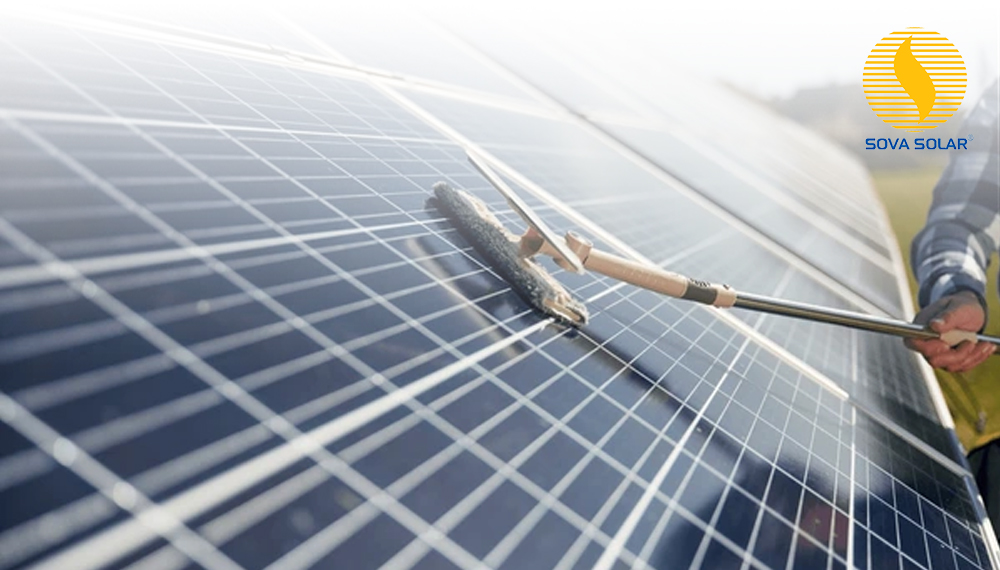
- sovasolar_admin
- Aug 29, 2024
- Uncategorized
- 0 Comments
You probably think of bright, cloudless skies and a blazing sun overhead when you think about solar panels. But what if I told you that it’s during the rainy, overcast days of the monsoon season that installation would be most appropriate?
As counterintuitive as it may sound, embracing the monsoon could be the smartest move you make for your energy future. While others are waiting for sunnier days, you can take advantage of the weather to unlock the hidden potential of solar energy during this rainy season.
Be it reducing your costs, testing the preparedness of your system, or getting an edge over competitors, the monsoon offers exclusive opportunities that you surely will not get during the sunniest months of the year.
Here are the top five reasons why getting into solar power now will set you up for long-term success.
1. Avail Pre-Monsoon Deals and Discounts
The monsoon season appears to be the time of year that brings a lull in demand for solar panel installations, perhaps because many would mistakenly believe that solar panels do not work as well during this time of the year.
This misconception works to your advantage. To keep business flowing, solar providers offer enticing discounts and promotions. Many of these off-peak deals will shave down significantly on your upfront investment, setting your solar energy into motion.
By taking advantage of these, you cut down on your upfront costs and accelerate your shift to clean, renewable energy. Let the rain be your guide then to substantial savings and quicker payback.
2. Perfect Time for Installation
The strategic step would be to install solar panels during the monsoon so that high gear would be attained once the rainy season subsides. With the system fully operational by the time the clouds clear and the sun beats down in full force, it shall be ready to harness the abundance of sunlight that follows.
Furthermore, it provides one the opportunity to check your roof’s condition during the monsoon. Heavy rains may have shown leaks, structural weaknesses, or other issues that might otherwise have been masked in dry months.
These are concerns that, as part of our installation process, we ensure have been taken care of to have solar panels that will not bring about resultant damages to your home. Dealing with these concerns right at the beginning of the process will really set your solar system—and your home—up for optimal performance and endurance.
3. Improved System Testing under Real-World Conditions
Thus, the monsoon season is an excellent opportunity to push your solar system through its paces when the weather is inclement. Other than predictable performance during sunny days, the rainy season lets you see how well your solar panels handle overcast skies and heavy downpours.
This real-world testing phase is important because it enables you to see exactly how well your system can perform and how resilient it will be during periods of low sunlight. In case any problems do crop up, you can get them adjusted or upgraded on time to have your solar setup in top shape throughout the year.
You can experience and understand your system’s potential firsthand by installing it during the monsoon, which gives you the confidence that it will sustain any weather, come rain or shine.
4. Lower Energy Bills During High Usage Periods
The monsoons generally bring a cool change, which can equate to a temporary lessening of energy usage, especially from air conditioning. However, once the rainy season is over, the heat tends to come back with a vengeance, and energy usage surges drastically as air conditioners and fans work at overload capacity.
Get ahead and install the solar panels in the monsoon so that your system is primed to run just when demand picks up, supplying all of this extra need. In so doing, your solar panels help counterbalance the higher energy costs associated with higher temperatures, ultimately keeping electricity bills manageable.
Instead of receiving strong bills at peak usage times, you will benefit from the savings that your solar power system enables to be made, making a more balanced and predictable energy budget throughout the year.
5. Maximize Benefits through Net Metering
Net metering is a very useful policy. Any extra energy that your solar panels produce can be sold back to the grid, creating a credit on your utility bill. Naturally, during the monsoon, there’s less sunlight, so although your panels will continue to turn out electricity, they will be at reduced capacity.
You are setting yourself up for the best net metering benefits after the monsoons when the sun is shining hard. With the installation of your system, when the sun gets brighter after the monsoons, you will start generating energy credits while your solar panels bump up their production in the months that follow.
These credits can significantly defray your energy costs throughout the year, especially during the high demand periods. In effect, getting solar installed during the monsoon season primes you to garner further value out of that investment, letting even cloudy days be turned into an avenue for long-term savings.
Wrap Up
Monsoon is an ideal time to commit to the future. Installing solar panels in this season is more than improving a home; it is rather being proactive in reducing carbon footprints while promoting environmental responsibility.
By changing over to solar now, you are in synchronicity with the rain’s themes of growth and transformation. Installation on your part should be smooth and professional with the help of an experienced solar panel distributor. Only such experts can help you in getting the best deals and optimizing your system for maximum efficiency.






